FRIDAY, JULY 10, 2020 Warning Infectious Disease Ahead

FRIDAY, JULY 10, 2020
The
101st Edition
From Our Archives
PREVENTION POSTERS
PUSH THE MESSAGE
FROM THE NATIONAL LIBRARY OF MEDICINE
OF THE
NATIONAL INSTITUTE OF HEALTH
MALARIA

National Library of Medicine #101451933
Before the age of social media, posters were a primary form of visual communication meant to catch the public’s eye even if just for a fleeting moment. Like today’s tweets, posters have limited amount of room for text and must effectively convey a concise message to an audience that does not have the time or attention span to read while on the go. And like tweets, posters have the added benefit of allowing for a dominant image to help convey a message in visual form.
TUBERCULOSIS


Tuberculosis, an infectious disease affecting the lungs, and described in a 2018 article in The Lancet as, “the number one cause of death from infectious disease globally,” saw a wide-variety of posters distributed with imagery meant to elicit an emotional or fearful response from the viewer, therefore leaving a lasting impression that would lead to good health hygiene. Illustration of a human hand choking a snake. Venom drips from the snake’s open mouth. Il Faut Vaincre la Tuberculose Comme le Plus Malfaisant des Reptiles, poster, 1918 National Library of Medicine #101439371 Primary image is a photograph of a baby. On either side of image is a Cross of Lorraine Protect Them From Tuberculosis, poster, 1930 National Library of Medicine #101453758 The French poster here created in 1918 by the American Tuberculosis Preservation Commission in France features a menacing illustration of a human hand choking a cobra, while venom drips from the snake’s open mouth. The poster warns that tuberculosis must be battled as the most harmful of reptiles. The poster, “Protect Them from Tuberculosis,” created in the United States in 1930 prominently features a baby, creating an emotional appeal to the viewer to protect a vulnerable population from the deadly disease.

INFLUENZA
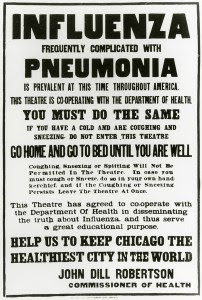
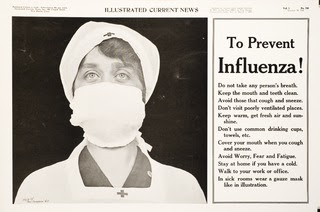

Tuberculosis, an infectious disease affecting the lungs, and described in a 2018 article in The Lancet as, “the number one cause of death from infectious disease globally,” saw a wide-variety of posters distributed with imagery meant to elicit an emotional or fearful response from the viewer, therefore leaving a lasting impression that would lead to good health hygiene. Illustration of a human hand choking a snake. Venom drips from the snake’s open mouth. Il Faut Vaincre la Tuberculose Comme le Plus Malfaisant des Reptiles, poster, 1918 National Library of Medicine #101439371 Primary image is a photograph of a baby. On either side of image is a Cross of Lorraine Protect Them From Tuberculosis, poster, 1930 National Library of Medicine #101453758 The French poster here created in 1918 by the American Tuberculosis Preservation Commission in France features a menacing illustration of a human hand choking a cobra, while venom drips from the snake’s open mouth. The poster warns that tuberculosis must be battled as the most harmful of reptiles. The poster, “Protect Them from Tuberculosis,” created in the United States in 1930 prominently features a baby, creating an emotional appeal to the viewer to protect a vulnerable population from the deadly disease.

AIDS
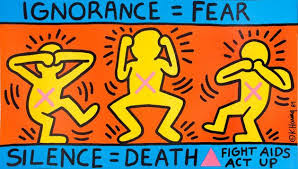
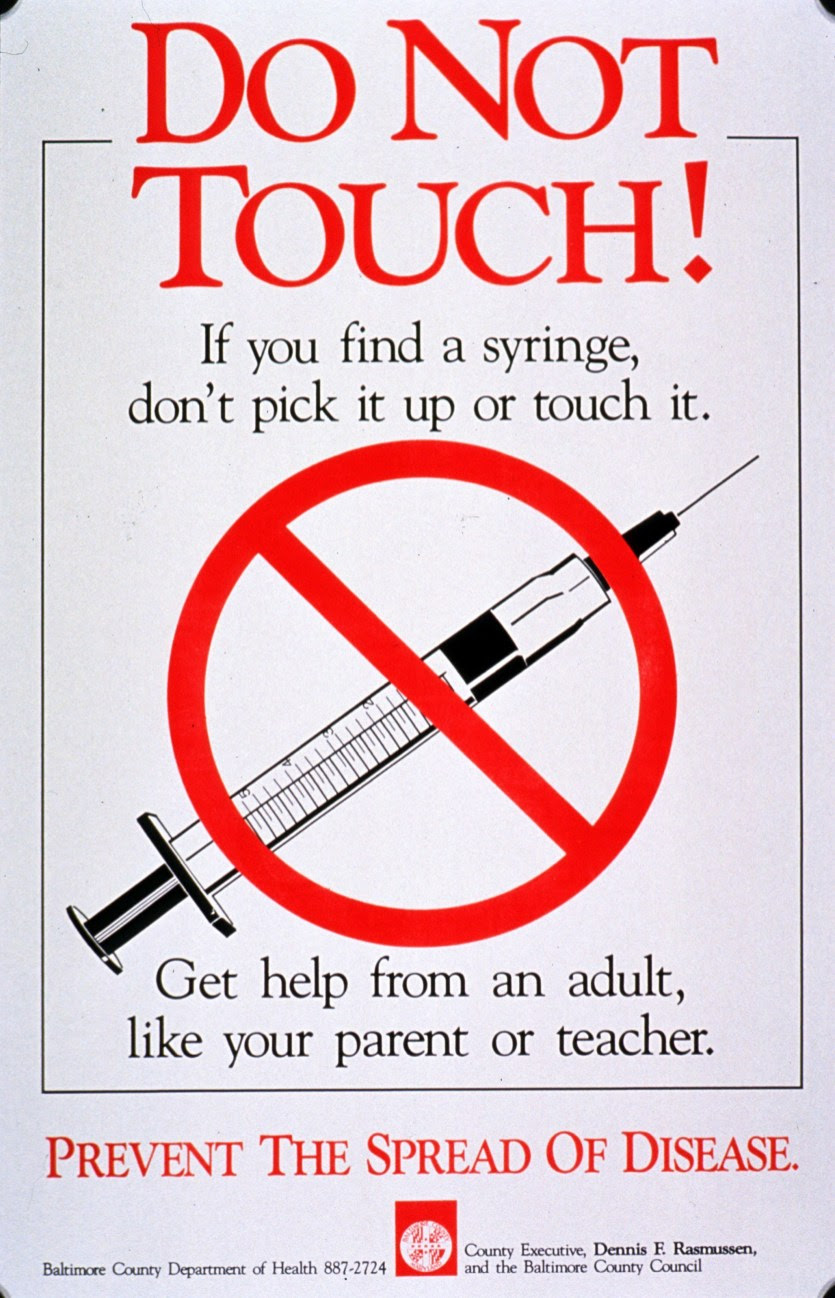
In 1981 the first known cases of AIDS were reported in the United States. The disease swiftly circled the globe, leaving in its wake a profound sense of fear and negative social stigma among those who were diagnosed with AIDS. A lack of knowledge about the disease coupled with the fact that there was no cure, lead to myths and misinformation being spread, which served to propagate public panic and bigotry amidst a rapidly increasing number of AIDS-related deaths. No one knew what caused the disease, how to prevent it, or if they were immune. Illustration of a syringe. The top of the plunger is a skull and crossbones. Title to right of illustration. Don’t Share Needles, Don’t Get Stuck with AIDS, poster, 1988. National Library of Medicine #101438836 Two men are embracing each other. One is holding an unopened condom between his fingers. Men of the 90’s. Top, Bottom, Both. Do the Safe Thing, poster, ca. 1990. National Library of Medicine #101452097 Targeted posters for the gay community and IV drug users, two of the highest risk populations, became prevalent in the 1980s as more was discovered about how the disease was spread. Posters educated individuals on how to protect themselves without stifling or discriminating against their lifestyles. The first poster, “Don’t Share Needles,” does not preach to drug users to stop using needles, but rather instructs not to share them. The skull and crossbones at the top of the syringe suggests dire consequences if risky behavior continues. The poster, “Men of the 90’s,” promotes the use of condoms while visually celebrating the gay lifestyle. Crayon-like drawing of a child standing amid flowers. The child’s arms are stretched out as if asking for a hug I Have AIDS, Please Hug Me, poster, 1987 National Library of Medicine #101451779 Posters were also aimed at the general public to debunk myths about how the disease was spread. A common myth in the early days of the AIDS crisis was that the disease could be spread by touching or being in the same room as an AIDS patient. The poster, “I Have AIDS, Please Hug Me,” seeks to discredit this notion by showing a child’s self-portrait drawn in crayon stating “I have AIDS.” The child’s arms are outstretched asking for a hug, and unequivocally adding, “I can’t make you sick.”

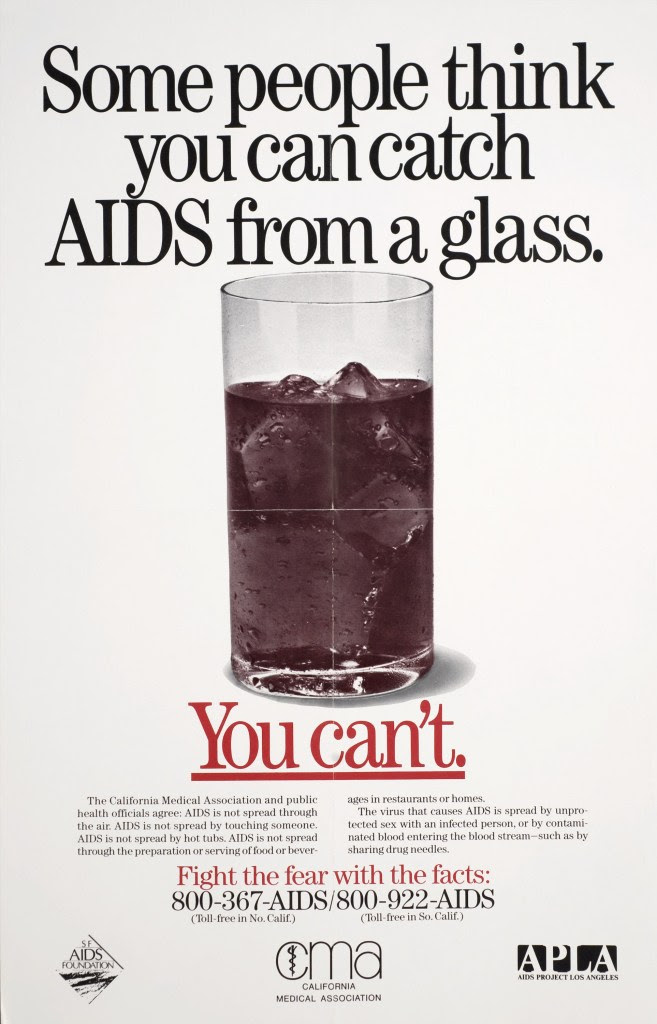
POLIO

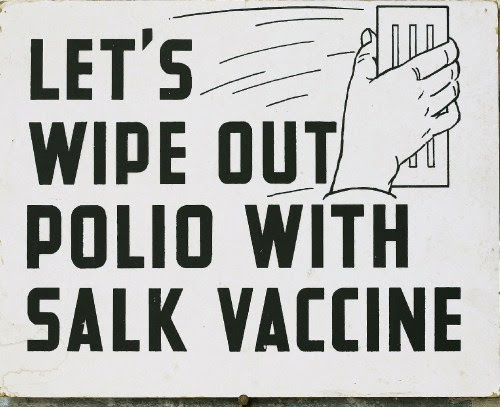
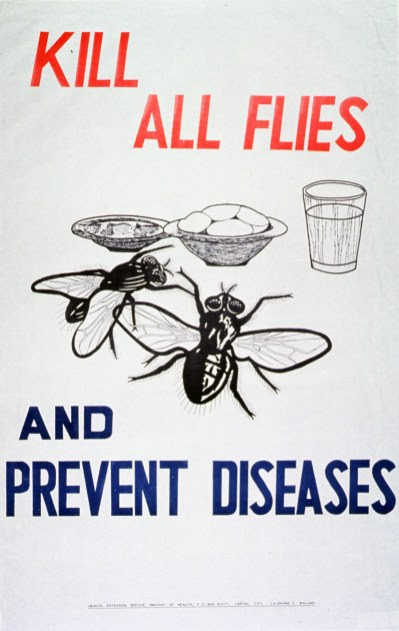

WHOOPING COUGH RECENTLY RETURNING

West African Ebola Between 2014 and 2016 West African Ebola claimed the lives of over 11,000 people in 10 countries, in what became the largest Ebola virus epidemic in history. A series of public health posters were created during the outbreak meant to dispel rumors about how the disease was spread. The posters below were created as part of a campaign to show support for health-workers and Doctors Without Borders who risked their lives to treat patients of the deadly disease.
FRIDAY PHOTO OF THE DAY
SEND YOUR ENTRY TO

THURSDAY PHOTO OF THE DAY
1940’S PHOTO OF GOLDWATER HOSPITAL TERRACE WITH THE BARBER GIVING A HAIRCUT AND VISITORS ENJOYING THE OUT-OF-DOOR AREA ADJACENT TO THE WARDS.
The winner is JAY JACOBSON, ALEXIS VILLEFANE, BONNIE WALDMAN

EDITORIAL
This edition is part of a longer publication of CIRCULATING NOW by Ginny Roth. Ginny A. Roth is the Curator of Prints & Photographs in the History of Medicine Division at the National Library of Medicine.
We have a phenomenal resource for medical information and history; THE NATIONAL LIBRARY OF MEDICINE of the National Institute of Health. Located in Bethesda, Maryland the NLM has an amazing collection of medical, historical and reference material that can be used by the public. Last year I visited the NLM and met with staff and historians, Jeffrey S. Reznick, Ph.D. Chief of the History of Medicine Division and Stephen Greenberg, MSLS, PhD Librarian and archivist.
CIRCULATING NOW is an online publication that features articles on medical and scientific history The website is: https://www.nlm.nih.gov/hmd/index.html
JUDITH BERDY
Text by Judith Berdy
Thanks to Bobbie Slonevsky for her dedication to Blackwell’s Almanac and the RIHS
Thanks to Deborah Dorff for maintaining our website
Edited by Melanie Colter and Deborah Dorff
All image are copyrighted (c)
Roosevelt Island Historical Society
unless otherwise indicated
FUNDING PROVIDED BY ROOSEVELT ISLAND OPERATING CORPORATION PUBLIC PURPOSE GRANTS
CITY COUNCIL REPRESENTATIVE BEN KALLOS DISCRETIONARY FUNDING THRU DYCD


Copyright © 2020 Roosevelt Island Historical Society, All rights reserved.Our mailing address is:
rooseveltislandhistory@gmail.com

Leave a comment